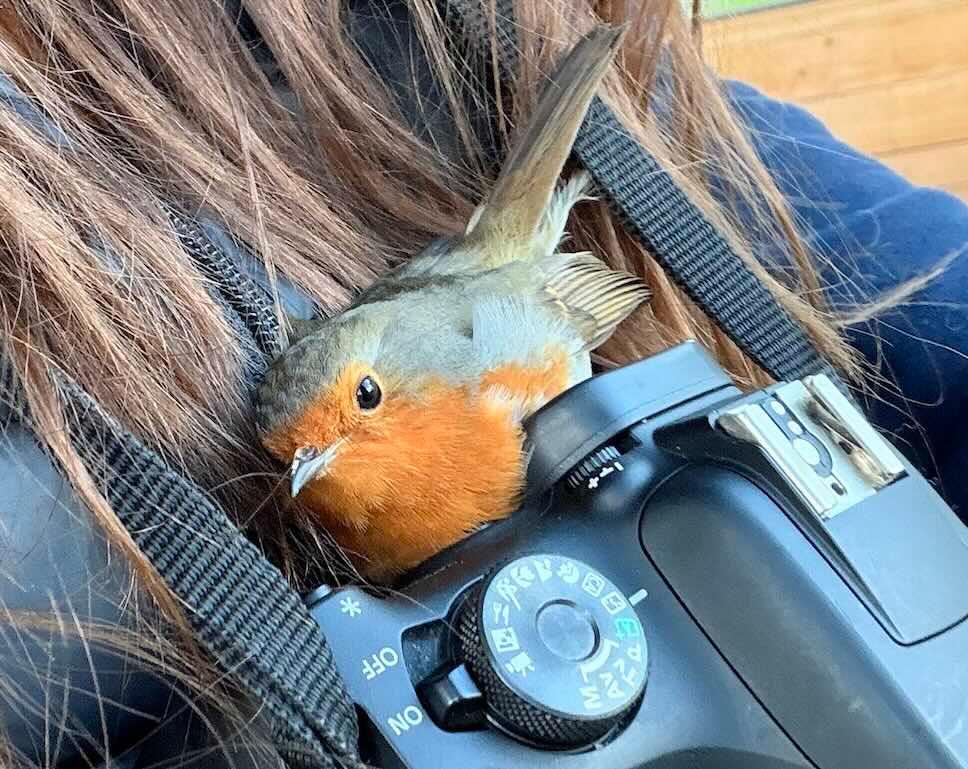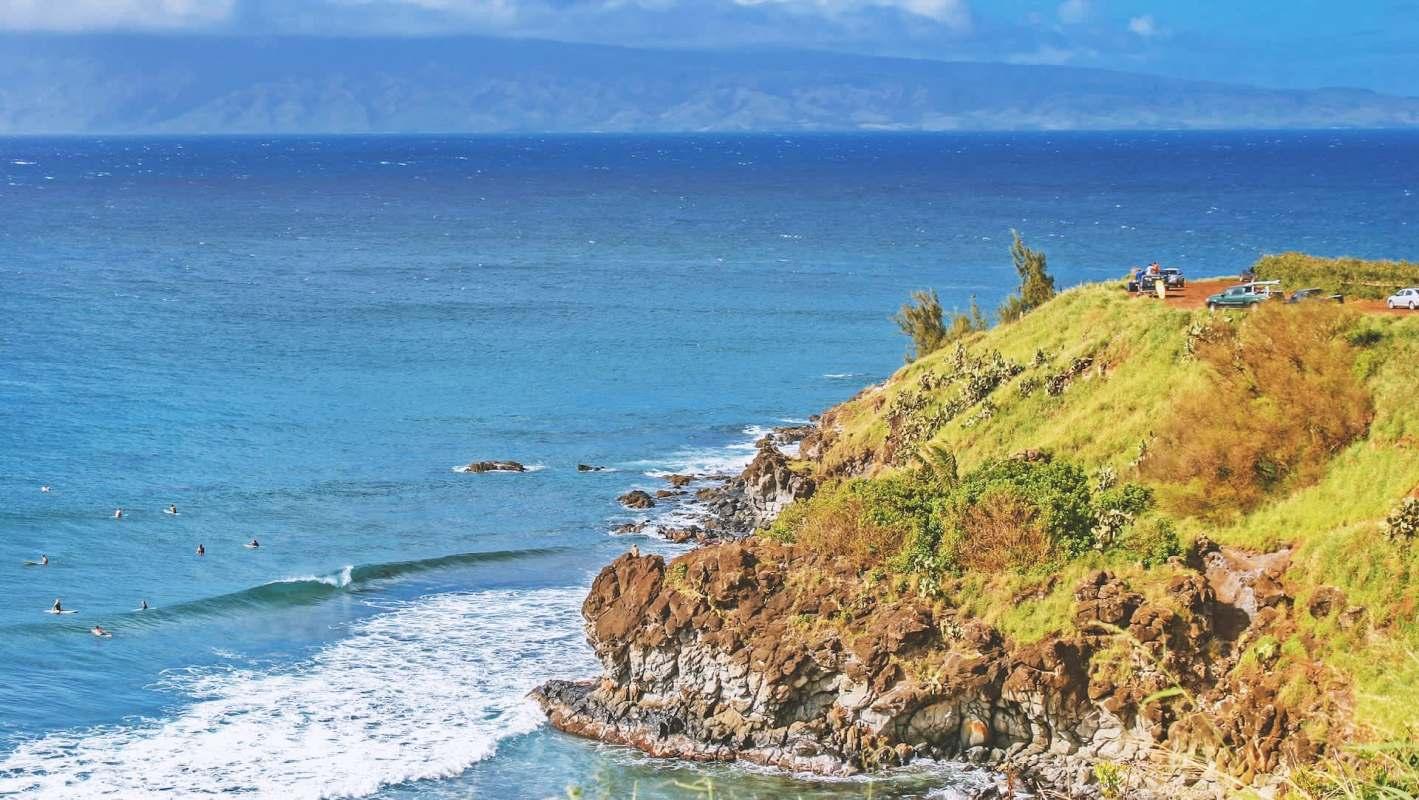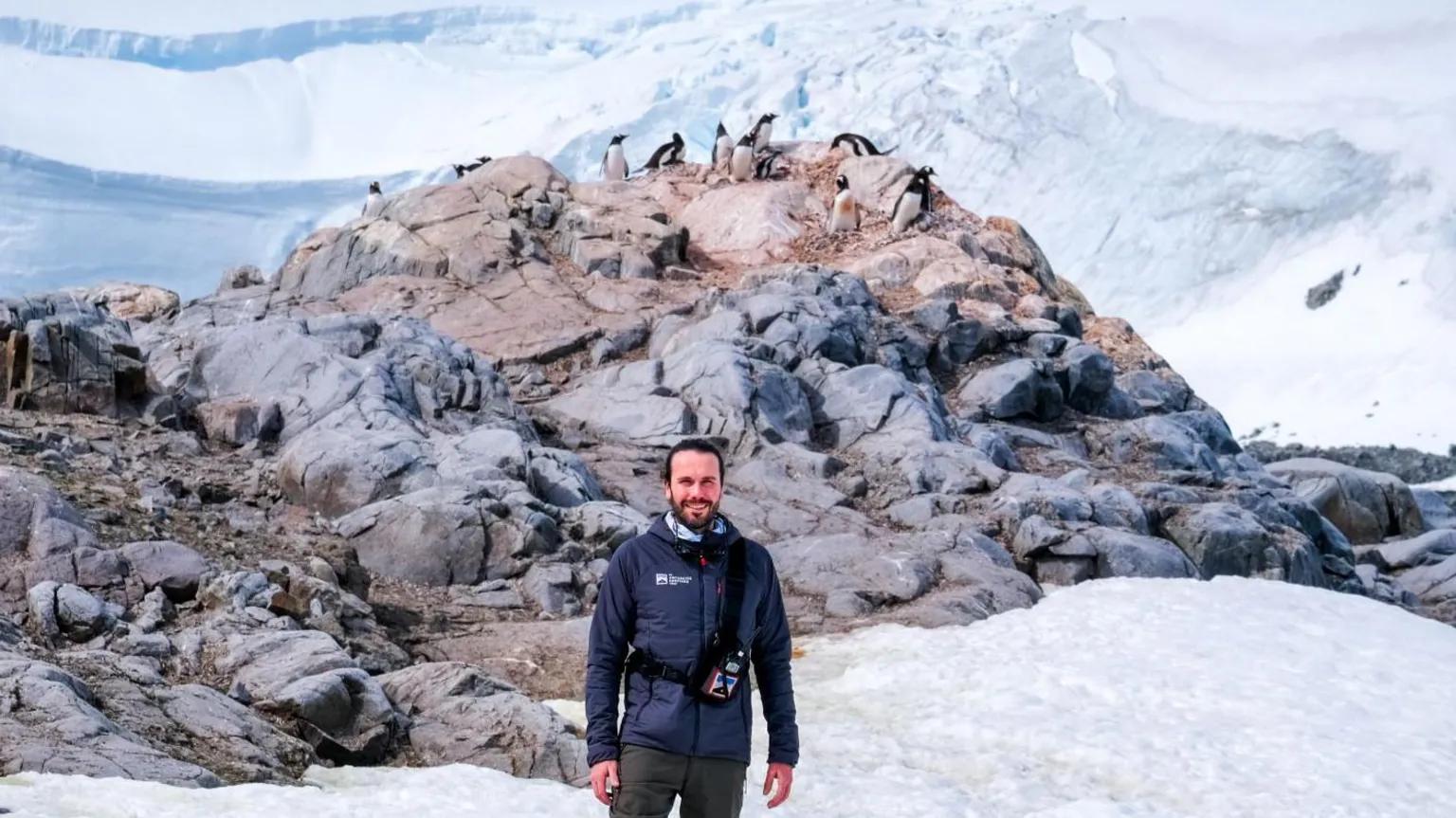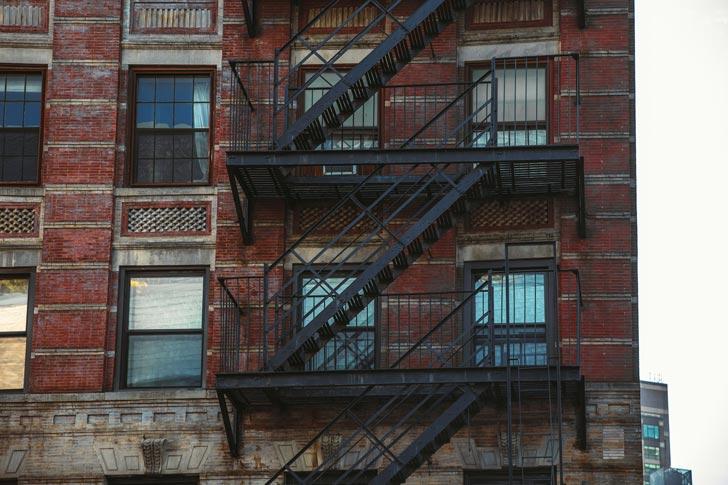Scroll For More

Score (95)
Paris gives Paralympic Games a send-off for the ages
France bid farewell to the Paralympic Games with a massive electronica dance party at the Stade de France stadium, featuring top elite para athletes and a dazzling light show. The closing ceremony was filled with music, fireworks, and performances that left spectators in awe. With record ticket sales and global coverage, Paris 2024 set a new benchmark for the Paralympic Games. Organizers celebrated the success of the games while emphasizing the importance of breaking down barriers in society beyond sports.

Score (98)
Photographer Captures Heartwarming Moment As Bird Seeks Warmth In Her Embrace
A photographer in England got an unexpected companion during a recent wildlife outing — a tiny robin that decided to make her camera its perch and her head its home. Fay Wadsworth, 31, was visiting Yorkshire Wildlife Park in Doncaster last Monday when the encounter happened. She had been waiting patiently near the Amur leopard enclosure, hoping to photograph the park’s new cubs, when she suddenly heard a flutter of wings. “It was a little robin that sat on my camera… and it decided my hair was the perfect nestling spot,” Wadsworth said. At first, she thought the bird had accidentally flown into her and gotten tangled. “I freed his legs and opened out my hand, expecting him to fly away as quickly as he possibly could. But he didn’t; he stayed.” The robin, apparently more interested in companionship than food, nestled comfortably by her jacket, soaking in the warmth. Wadsworth said she consulted with wildlife rangers, who advised her to remain near the woodland area until the bird was ready to move on. Eventually, the robin flew into a nearby tree and began to sing. Wadsworth called the moment a blessing, adding, “I was blessed by this very friendly—and presumably cold—robin.” She later shared photos of the encounter online, where fellow nature lovers responded with their own stories of unexpected bird friendships. As one person put it, “Sometimes, the wildlife finds you.”

Score (93)
Ford CEO Honors Late Cousin Chris Farley While Helping Men Overcome Homelessness in Detroit
Jim Farley spends most of his time leading one of the world’s biggest automakers. But lately, he’s been just as focused on something else: helping Detroit’s homeless. Farley, the CEO of Ford Motor Co., has been quietly volunteering for decades at the Pope Francis Center, a facility in Detroit that supports men experiencing chronic homelessness. Since September 2024, he’s taken that commitment further, spending time at the center’s new Bridge Housing campus, a sprawling 60,000-square-foot facility that provides far more than just shelter. The center offers 40 studio apartments, meals, a library, a gym, barbershop, chapel, medical and dental clinics, legal services, and an art room. More importantly, it gives its residents time, support, and dignity. “It’s not just giving to them,” said Rev. Tim McCabe, the center’s CEO. “It’s holding them accountable and giving them agency and expecting them to succeed and telling them it’s possible.” For Allan Webster, one of the residents, it has meant a shot at turning his life around. An artist with a gift for building miniature models, Webster ended up living in his van after losing steady work as a painter. “I hit like a dead spot and I couldn’t find no more work,” he told Farley. “I couldn’t pay my rent and, boom, I was living in my van for two years.” That all changed when the Pope Francis Center approached him at the end of a 30-day Salvation Army program and offered him a place to stay. “It sounded too good to be true,” Webster said. “You’ve got your room, you’ve got your own TV, an art room, a library, you eat great here … washer and dryer and they’ll keep you here until you get a place of your own. They really help you out.” On a recent afternoon in December, Webster sat in the art room working on a new model when Farley dropped by. The two struck up a relaxed conversation, with Farley asking about Webster’s life, his family, his childhood without a father, and his dreams. “I used to tell (my mom) … I was going to stay sober and, boom, I would relapse,” Webster admitted. “So I gotta show her, actually show her that I’m doing better.” Farley listened intently. “I see. I see,” he said. “Addiction is a big part of all of our lives.” It’s also part of his own family’s story. Farley’s cousin was the late comedian Chris Farley, who died of a drug overdose in 1997. In honor of him, the Pope Francis Center named a room after Chris, where residents attend nightly AA and NA meetings and take life skills classes. “We thought having a room would be great because it’s a big problem that we have to unpack for people here,” Farley said. “It’s a big problem in a lot of families like our family and it’s a tragic thing.” Farley helped raise around $40 million to build the new campus and donated money himself, though he declined to say how much. His presence is low-key, not performative. On visits, he greets the 37 staff members and two dozen daily volunteers, banters with residents, and asks questions like any curious guest might. “You listen to music? I do, too,” he told Webster. “You just do your thing for hours and hours.” When Webster handed Farley a gift — a detailed model of a Ford Model T pickup truck that he built himself — Farley was visibly moved. “This is something I’ll treasure forever especially coming from you. Thank you so much,” he said, hugging Webster. “I love it. That’s fantastic.” The model had special meaning. Farley’s grandfather, Emmet Tracy, was an early Ford employee who helped build the original Model T. Farley plans to display the miniature truck in his new office at Ford’s world headquarters. He even asked Webster to visit and “run Ford” for 10 minutes. Webster laughed and said he’d want to see how cars are designed. “Don’t they start off with a big block of clay and sculpt it? That’s the part I would like.” “You should be a clay modeler for Ford,” Farley replied. “You’d like that job.” The casual conversation carried weight. It wasn’t about charity — it was about connection. As Webster explained his goal of becoming a house painter and learning to create faux marble effects on pillars, Farley encouraged him. “I have the same high expectations that your mom has of you,” he said. “I’m waiting to hear what happens.” Since opening, the Bridge Housing campus has already helped 13 men through its recovery and life skills programs, with more on the waiting list. McCabe says what makes the center different is the way it becomes a surrogate family for its residents. “What keeps us from falling into homelessness? We have a family net that keeps us safe,” he said. “These guys don’t have that, so we become family to them.” For Webster, that’s made all the difference. “I’ve never been to a place like this in my life,” he said. “It’s saved my life.”

Score (97)
Maryland Neighbors Rescue Mom and Two Children from Burning Home in Harrowing Early Morning Fire
A group of quick-thinking neighbors in Middle River, Maryland, came together in the early hours of Tuesday, Jan. 6, to save a mother and her two children from a house fire — an act of bravery captured on a doorbell camera across the street. The fire broke out just after 7 a.m. local time, according to the Baltimore County Fire Department (BCFD). By the time fire crews arrived on the scene at 7:12 a.m., the family had already been pulled to safety by neighbors. The mother and two children were treated for minor injuries and taken to a nearby hospital. Tragically, a dog found inside the home did not survive. The incident was recorded on a Ring camera belonging to neighbor Steven Angelini, who played a key role in the rescue. The footage, later shared by the fire department, shows flames shooting from a bay window as neighbors rush toward the burning house. In the video, people can be heard yelling for a ladder while smoke pours from an upstairs window. As the fire intensified, two children were dropped from a second-story window and caught by Angelini. A ladder was later used to help the mother escape. “This incident is a powerful reminder of the strength of our communities,” said Baltimore County Fire Chief Joseph Dixon in a statement. “Before our fire and EMS crews arrived, neighbors acted without hesitation to help a mother and her children escape a dangerous situation. I want to thank these residents for their courage and selflessness.” Dixon also praised fire crews for their quick work extinguishing the flames and providing medical support. The cause of the fire remains under investigation. Angelini, speaking to local news outlet WMAR 2, said he acted on instinct when he heard the screams. "My immediate reaction was I want to make sure that everyone's out of the house,” he said. “By the time I got to the middle of the street, I heard horror screams. It was haunting, it was scary, and I knew it wasn't good.” Although he had recently injured his arm and couldn’t lift a ladder himself, he knew time was running out. “My next option was, you know… they probably have, maybe a minute, seconds left to live, so I told the mother to drop the kids to me,” he recalled. Despite the heroic actions, Angelini downplayed his role. “I think God puts me in situations to help other people,” he said. “I did what I would want anyone else to do for my family.” In the aftermath, officials are using the incident to remind residents to check their smoke alarms and fire safety plans. For one Maryland neighborhood, a terrifying morning became a powerful example of community, courage, and compassion in action.

Score (97)
Volunteers Unite To Combat Coastal Erosion In Hawai'i With Native Plant Initiative
In a hands-on response to the growing threat of coastal erosion, about 40 volunteers gathered in Pāʻia, Hawai‘i, to plant more than 900 native plants along the shoreline. The effort is part of a larger, nature-based strategy to combat rising sea levels and build up natural barriers using species that have evolved to thrive in the islands’ fragile coastal ecosystems. According to Hawai‘i Public Radio, the community-led initiative included planting over 30 native species such as beach pea, oval-leaf clustervine, sea purslane, beach morning glory, and seashore dropseed. These plants play a critical role in stabilizing sandy shorelines by catching wind-blown sand and helping to build and reinforce dunes. As the dunes grow, they can act as buffers against encroaching tides and storm surges. “These native plants evolved to thrive in these conditions and can anchor soil that would otherwise be washed away,” organizers explained. The technique is cost-effective and relatively low-maintenance, requiring little irrigation or intervention once plants are established. The approach has been used in similar efforts globally—from helping farmers shield crops from erosion to Nicaraguan communities protecting freshwater sources. Hawai‘i faces particularly high stakes. A recent study revealed that one area of O‘ahu is sinking by 25 millimeters each year, compounding the risks posed by global sea-level rise. While the state has invested in improved sea-level monitoring systems, future adaptation efforts are uncertain amid looming federal budget cuts. The drivers of sea-level rise are largely tied to climate change. As greenhouse gas pollution traps more heat in the atmosphere, polar ice caps continue to melt at accelerated rates. The loss of reflective ice exposes darker land and water, which absorb more heat and worsen the cycle of thawing. While native plant restoration won’t stop global warming, it offers a fast and effective frontline defense. “Hosting a volunteer day increases community engagement, nourishes the relationship between people and the land, and reflects the county's strong commitment to sustainability,” said Patrick McCall, director of Parks and Recreation, via Hawai‘i Public Radio. Organizers hope the event does more than plant seeds in the ground—it plants a sense of stewardship among those who call the coast home.

Score (96)
Hidden for Decades, Steven Tyler’s Autograph Was Just Found Behind an Elevator Panel at a Halifax Arena
A piece of rock history was rediscovered in a freight elevator at Halifax’s Scotiabank Centre over the holidays — a pristine signature from Aerosmith frontman Steven Tyler, untouched and hidden behind a protective panel for nearly 30 years. The discovery came when maintenance workers were removing a bumper inside the well-used freight elevator, which has long served as the backstage gateway for touring acts and event staff. There, preserved in near-perfect condition, was Tyler’s autograph — a relic from Aerosmith’s Dec. 28, 1993 show at the then-named Halifax Metro Centre. “It’s funny to be star-struck from an autograph, but it is a really cool piece of rock history to have his autograph in our facility,” said Adria Young, spokesperson for Events East, the Crown corporation that operates the arena. The concert, part of Aerosmith’s Get a Grip tour, saw tickets go for $32.50. Official merch ran between $28 and $40, but the night gained some infamy thanks to bootleggers selling counterfeit T-shirts for as little as $10 inside the venue. After being kicked out by security, they reportedly continued selling outside to fans leaving the show. Three Montreal-area men were later fined in Halifax provincial court for copyright violations. One was even caught again two years later selling fake Bon Jovi shirts at another Halifax concert. As for the elevator, it turns out the tradition of signing the wall was a long-running one. “It just became sort of this funny little custom that people would do,” said Young. From the late 1980s onward, bands and performers would occasionally use the elevator to get from the loading bay to the stage. Over time, they’d leave their signatures on the walls — a mix of rock stars and arena staff alike. Longtime employees recall names like Axl Rose, Bryan Adams, and possibly even Neil Young, Billy Idol, and Alice Cooper. But most of those autographs are now gone. The wall was painted over in the late 1990s when it started looking too chaotic, cluttered with signatures from not just performers but maintenance workers, caterers, and security staff. Bumpers were added to protect the walls from further wear. Tyler’s autograph, however, survived — tucked away behind one of those protective panels. It hadn’t been seen in about 20 years until maintenance crews stumbled upon it again. The find sparked buzz inside the building. Word spread by internal email, and some staff even took pictures with the newly revealed signature before it was once again hidden from view. “It’s an incredible memento and reminder of Scotiabank Centre’s legacy as the home of sports and entertainment in the Atlantic region for almost 50 years,” said Young. “And we can imagine there are similar treasures hidden throughout the facility from artists and athletes and figures over the last 50 years, so we hope to uncover more of those in time.” For now, fans hoping to catch a glimpse will be disappointed. With maintenance work complete, the panel was put back in place and the autograph is once again out of sight — a secret piece of Halifax’s rock-and-roll history, tucked back into the walls where it waited for decades.

Score (95)
Why This Researcher Spent Christmas Counting Penguins in Antarctica
While most people were unwrapping presents on Christmas morning, Pete Watson was counting penguin chicks. The 41-year-old from Caister-on-Sea, Norfolk, is spending three months living among more than 1,000 gentoo penguins on Goudier Island in Antarctica — one of the most remote places on Earth. Watson is stationed at Port Lockroy, a football-pitch-sized outpost on the Antarctic Peninsula. He’s there on behalf of the UK Antarctic Heritage Trust as part of a three-year conservation effort to help protect Base A — a British heritage site — from the growing impacts of climate change. “Even though some days can be quite tough and quite challenging, you only have to step outside or look outside the window to just remember how fortunate we are,” said Watson. He’s working as a penguin monitor, collecting detailed population data over the austral summer. “I'm particularly interested in the number of nests, the number of eggs, then eventually the number of chicks and the number of chicks that make it through to maturity,” he said. The information Watson is collecting will be fed into a broader study by the British Antarctic Survey, which tracks wildlife trends and climate shifts across the continent. While gentoo penguins are not considered endangered — with an estimated 774,000 individuals in the wild — Watson says monitoring their population is still essential. “Even though the species in itself isn't in decline, it's still important for this kind of data to be collected,” he said. Gentoos are the third-largest species of penguin, after emperor and king penguins. They are fast swimmers, reaching underwater speeds of up to 35 kilometres per hour, and are known to mate with the same partner year after year. They typically live up to 20 years in the wild. Despite the charm of daily life with the penguins, Watson says living on Port Lockroy “doesn’t come without its challenges.” There’s no running water or showers, and the team is experiencing 24 hours of daylight during the southern summer. “Life is pretty basic here,” he said, “but at the same time, it is utterly charming.” This is Watson’s first time living in Antarctica for an extended period and his first experience as a penguin monitor. He has a background in expedition travel writing and had visited the continent once before. In addition to conservation work, the team is also carrying out vital repairs to Base A — Britain’s first permanent research station in Antarctica. Now more than 80 years old, the structure houses the world’s southernmost post office and museum. The UK Antarctic Heritage Trust says the base is facing increasing deterioration from age, weather, and environmental wear. As Watson spends his days monitoring penguin populations and restoring a piece of polar history, he’s keenly aware of what’s at stake. “This region of the world is one of the fastest warming places on the planet,” he said. His work, done in the quiet company of seabirds and ice, is part of a much larger effort to understand what happens next.

Score (83)
Golden Globes 2026: What to Know Before Hollywood’s Big Night
The 2026 Golden Globe Awards are here, and this year’s nominees bring plenty of star power and surprises. Leading the film race is Paul Thomas Anderson’s One Battle After Another, which racked up nine nominations. Joachim Trier’s Sentimental Value follows close behind with eight, and Ryan Coogler’s Sinners isn’t far off with seven. In television, The White Lotus returns with six nominations for its third season, while Netflix’s breakout miniseries Adolescence landed five. The event kicks off Sunday night at 8 p.m. ET, airing live on CBS and streaming on Paramount+. For red carpet fans, coverage begins earlier: E! Network will air Live from E!: Golden Globes 2026 starting at 6 p.m. ET, also available on Peacock. Variety’s red carpet stream will begin at 6:30 p.m. ET on YouTube and Fire TV devices. Who's hosting? Comedian Nikki Glaser returns to host after a well-received debut last year. Her sharp comedic style and no-filter delivery are expected to drive some of the night’s most buzzworthy moments. Who’s predicted to win? In the film categories, Sinners heads into the night with strong momentum after winning four prizes at the Critics Choice Awards, including best drama. But it faces tough competition from Sentimental Value, Hamnet, and a remake of Frankenstein. On the comedy side, One Battle After Another is a favorite. After claiming both best picture and best director at the Critics Choice Awards, it’s widely expected to win best motion picture (musical or comedy) on Sunday. TV categories to watch The Pitt is the frontrunner for best television drama series, following a dominant showing at last year’s Emmys. But it’s not alone. Severance, The White Lotus, and Vince Gilligan’s Pluribus are also in the running. In limited series, Adolescence is a top contender. The show already made headlines last fall when 15-year-old Owen Cooper became the youngest male actor to win an Emmy. Other nominees include Black Mirror and Dying for Sex. For best comedy series, it’s a stacked field with Hacks, The Bear, Abbott Elementary, and Only Murders in the Building all competing. But The Studio, which cleaned up at the Emmys, is widely expected to take the win. Notable snubs Several high-profile projects were left out of major categories. Despite its box-office success, Superman received no nominations. That includes Rachel Brosnahan, a two-time Golden Globe winner, whose performance as Lois Lane was widely praised. Wicked: For Good failed to secure a nomination for best film (musical or comedy), while Jay Kelly missed out on a best picture (drama) nod. Both films still picked up recognition in other categories, but their absence from top honors raised eyebrows. Who to watch for on the red carpet This year’s red carpet will be packed with A-listers. Expect appearances from Emma Stone, Michael B. Jordan, Selena Gomez, Cynthia Erivo, Julia Roberts, George Clooney, Jennifer Lawrence, Tramell Tillman, Jenna Ortega, Walton Goggins, Leonardo DiCaprio, and Timothée Chalamet. Style statements and political symbolism may also shape the night. Past events have featured pins supporting Gaza, outfits promoting causes, and pointed red carpet interviews. Ariana Grande and Cynthia Erivo’s “holding space” moment could see a repeat. And yes, Chalamet’s viral orange Marty Supreme look may make another cameo—or at least another meme. Expect trending speeches With Nikki Glaser hosting, jokes about celebrity culture and Hollywood’s excesses are guaranteed. But emotional and political speeches could also take the spotlight. Actors have used recent award stages to speak out on immigration, LGBTQ rights, and global conflicts. Any speech that taps into that tension is likely to go viral. No matter who takes home the trophies, the 2026 Golden Globes are shaping up to be a night of big names, bold statements, and a few unpredictable moments. Now all that’s left is to grab the popcorn.

Score (98)
A Bronx Teacher Just Donated His Entire $25K Prize to Support Educators in Gambia
When Bronx educator Alhassan Susso won the $25,000 FLAG Award for Teaching Excellence earlier this year, he didn’t hesitate — he gave every dollar away. The award, which honors exceptional New York City teachers who inspire “learning through creativity, passion, and commitment,” was a personal milestone. But for Susso, the money was never about him. Instead, he donated the full amount to the Namie Foundation, a nonprofit he founded in his native Gambia to recognize and support educators working in underfunded school systems. The foundation is named after his grandmother. “The truth is, I took $45,000 out of my retirement,” Susso told The New York Times, referring to the initial $75,000 budget for the teacher-of-the-year award. “We worked hard to raise the rest from friends and family.” For months, Susso had been preparing an application for a public diplomacy grant from the U.S. Embassy in Banjul, Gambia. But in May, the application page vanished. A State Department official later told The Times that the awards were being pulled to reassess their alignment with the administration’s priorities. When Susso received the FLAG Award in June, he said it was a “no-brainer” to use the prize money to keep the foundation’s plans alive. The foundation doesn’t just recognize teachers. It also funds programs to support students with disabilities — an effort that carries personal weight for Susso, who is legally blind in one eye and losing vision in the other. “Disability is stigmatized [in Gambia],” he said. “People who are disabled can be successful if they are given the proper support.” Susso’s gift is part of a long track record of service. He’s been widely recognized for his work with immigrant and first-generation students in the South Bronx, helping them succeed both in and beyond the classroom. Now, he’s using that same passion to lift up educators — and students — on the other side of the world.

Score (56)
Rental Assistance Didn’t Just Prevent Evictions — It Also Improved Mental Health, Study Finds
A federal program created to keep low-income renters housed during the pandemic had an unexpected bonus: it helped them feel better, too. A new study led by UC Riverside researcher Wei Kang found that the Emergency Rental Assistance (ERA) program, launched in 2021, didn’t just reduce eviction, it also improved mental health for the people who received help. “Using a national dataset, we found that housing assistance helped low-income renters — who are among the most vulnerable populations — feel better and get mental health treatment when needed,” Kang said in a statement. “This demonstrates the importance of government programs in a time of crisis.” Congress created ERA to stabilize housing during the COVID-19 emergency, funneling more than $46 billion over four years to eligible renters, particularly renters of color. The program officially ended in September 2025, but its impacts are still being studied. Kang’s research, published this week in Health Affairs, analyzed responses from the U.S. Census Bureau’s Household Pulse Survey between 2021 and 2023. It compared two groups: renters who had received assistance and those who had applied but were still waiting. The differences were clear. Among people who received help: Symptoms of anxiety dropped by 9.1%, with 46% reporting recent anxiety, compared to higher rates among those still waiting. Depression symptoms dropped by 8.1%, with 38% saying they felt depressed in the weeks prior to the survey. Mental health treatment increased: those with rental aid were up to 7.9% more likely to have seen a mental health professional recently. The benefits, researchers said, came from two directions: the emotional relief of knowing eviction was off the table, and the financial freedom to pay for things like therapy, transportation to appointments, and prescription co-pays. “For those struggling to make ends meet, this shift in financial priorities proved crucial,” UC Riverside said in a statement. With rent no longer a looming crisis, people could redirect money toward their health. Kang believes the takeaway is broader than just rental policy. “The findings offer strong evidence that housing aid is also a form of health care intervention,” she said. Bruce Link, a co-author on the study and professor of public policy and sociology, said it flips a common concern about government aid. “What’s really interesting is that people in our field often worry about the unintended consequences of government programs — and that they’ll be bad, such as fraud or waste,” Link said. “But to the contrary, here are what might be deemed ‘unintended positive consequences.’”

Score (97)
Hospital Staff Throws Dream Wedding for Colorado Bride with Rare Cancer Diagnosis
Just two days after getting engaged, Aliana and Bailey Gleason were married in a hallway-turned-wedding-venue inside HCA HealthOne Swedish Medical Center — thanks to a group of hospital staff who turned compassion into action. Aliana, who was recently diagnosed with a rare sarcoma that had spread to her spine, had been undergoing treatment at the Colorado hospital when she and her partner of 11 years decided it was time to stop waiting. “Eleven years and we have wanted to get married for a long, long time,” Bailey told 9 News. “But we always said that we would do it when we had enough money for a nice ring and all the decorations we wanted and everything.” That plan changed when Aliana’s diagnosis left the couple facing limited treatment options. "We are thinking that life is short and that we want to be married," Bailey said. When staff at the hospital learned about their engagement, they stepped in — organizing an impromptu wedding with flowers, decorations, and everything the couple had dreamed of but never felt they could afford. “There is not a lot you can always do,” said Matt Turrie, a nurse manager in the oncology department. “So when there is something you can do — by supporting the family, supporting the patient, being able to put on something like this, a wedding, a celebration — that’s the least we can do.” Turrie said Aliana had shown “a lot of fight” throughout her treatment, and despite not receiving the best news, “every day she wakes up, and she is smiling.” On the day of the ceremony, hospital staff lined the hallway with white sunflowers, balloons, and streamers as Aliana walked down her makeshift aisle. Wearing a white gown, silver jewelry, and a tiara, she beamed with a bright diamond ring on her finger. Bailey wore a blue suit and purple tie. “I’m just blown away,” Aliana said of the surprise ceremony. “It was amazing and made me feel really supported and see the goodness in people, besides just the few I know are good.” The wedding was more than a celebration — it was a vow to weather the difficult road ahead. “We are going through some of the hardest things you can go through right now in our lives, not just medically, in every aspect,” Aliana said. “And... it was a promise to just stand next to each other and face the storm together.” As for the wedding itself? “It feels like it was supposed to be this way,” Aliana said. Bailey agreed: “It doesn't feel like it's not the wedding we wanted — it feels perfect.”